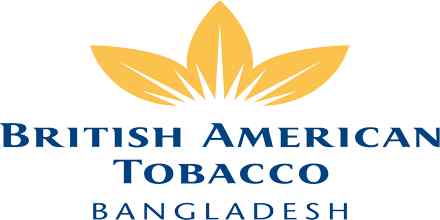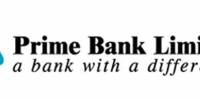Supply Chain Management of British American Tobacco Bangladesh
Briefly focus on 5S Implementation in Repair and Reproduction Store
British American Tobacco has established itself as one of the greatest successful Organizations in the world. It has been operating in market for over 100 years and still its journey hasn’t slowed down a bit. British American Tobacco is playing a great significant role in Bangladeshi economy. As we know British American Tobacco Bangladesh is one of the largest multinational companies in the country and this company is the highest corporate tax payer in Bangladesh. The best companies around the world are discovering a powerful new source of competitive advantage. It’s called supply-chain management and it encompasses all of those integrated activities that bring product to market and create satisfied customers. The Supply Chain Management Program integrates topics from manufacturing operations, purchasing, transportation, and physical distribution into a unified program.
Successful supply chain management, then, coordinates and integrates all of these activities into a seamless process. It embraces and links all of the partners in the chain. In addition to the departments within the organization, these partners include vendors, carriers, third party companies, and information systems providers.
British American Tobacco has an excellent supply chain system. It is so well maintained and organized that it has become this company’s key competitive advantage. They have applied so many scientific tools and concepts in the supply chain system to make it more effective and 5S is one of the concepts. They have implemented this concept to manage the materials and parts used to support the production process more effectively and efficiently.
British American Tobacco has made their parts and materials maintenance process flawless but yet there are some recommendations in the end of this report about the 5S implementation in Repair & Reproduction Department, Supply Chain, British American Tobacco Bangladesh Ltd.
Introduction
- About Supply Chain: Supply chain is a very crucial part of an organization. . To stay competitive in the industry, we need advance technology, new product, new method or working process and innovative research. But all these will remain unless, if there does not exist a very effective chain to convey services and products from producers to final end users. So, it is very important to have an effective and efficient supply chain system.
- Origin of the report: Internship is a part of BBA program under BRAC University. The report is originated from the curriculum requirement of BBA program. The topic of my report is “5S Implementation in Repair & Reproduction Department, Supply Chain, British American Tobacco Bangladesh Ltd”. For this purpose, I have observed their functions and operational activities closely. I accommodate my Internship Program with British American Tobacco Bangladesh and as per consultation with my academic supervisor Mohammad Rezaur Razzak, I chose the topic “5S Implementation in Repair & Reproduction Department, Supply Chain” for my study and analysis.
- Objective of the study: The objective of the study is divided into two steps. These are given bellow-
Primary Objective
The primary objective of preparing this report is to fulfill the requirement of BBA program. This contains four credits for internship and to apply the theoretical knowledge gained from the coursework of the BBA program in a specific field.
Secondary Objective
- To acquaint with Supply Chain Management of BATB.
- To relate the theoretical learning with the real life situation.
- To assemble various policy, procedure and practices regarding Supply Chain Management.
- To relate 5S theory with real life workplace.
- To formulate recommendations for possible improvement.
- Methodology:
Type of report
This report is exploratory in nature focusing on qualitative analysis and description.
Population and sample
The population covers 3500 regular staffs of BATB.
- Sampling method:
Data have been collected through interview, conversation, and previous documentary evidences.
- Sources of data collection:
Data collected from primary and secondary sources.
Primary Sources
- Data has been collected through working in the Supply Chain department of BATB.
- Officials from Supply Chain department of BATB have provided information.
- Additional information was collected through interviewing method- key informant interview, informal conversational interview and semi-structured interview.
Secondary Sources
Secondary data was collected from different sources like: reference books on Supply Chain, different website on current 5S practices, annual report, and internal information system of BATB.
- Scope of the study:
The scope of this report is to cover how the 5S Concept was implemented and improved, the material and parts management. For this Purpose data was collected from primary and secondary sources.
- Limitation of the study:
The report faced some problems during its preparation, which has limited purpose of the report.
The limitations are:
- It was difficult to collect information regarding some aspects of 5S process, as the authority regarded this information highly confidential.
- The internship has been made for three months long duration but it is very much difficult to set true practical experience with current world circumstances in this short span of time.
- Legal issues can be a parameter of evaluation of 5S implementation. However, it was not considered as a parameter in this report due to lack of comprehensive knowledge in legal issues.
- In spite of all these limitation I have tried to put the best effort as per as possible.
Industry Overview
Introduction
Supply chain management has become an integral part of all the organization now days. Its importance cannot be neglected in the current era. Implementing the comprehensive management of a supply chain is no easy task, but once it has been put into place, every person and organization within the chain benefits greatly. These days are different, and companies must ensure that each link in a supply chain is as strong as the one preceding it. In order to do that World’s renowned Organizations are implementing many methods and policies. Some of them have turned their supply chain system into near perfect system. Since I have started working as an intern in British American Tobacco Bangladesh, in this report I will be working on a very specific and important Office inventory management tool named 5S. British American Tobacco Bangladesh has implemented 5S in their Production Facilities in order to support their production and supply chain system. Considering the fact that, BAT has one of the best supply chain systems in the world, I’ve tried to gather information regarding how they have implemented 5S in their Production support system and in Supply chain system.
Tobacco Industry
The tobacco industry of Bangladesh is an age old industry. It has a huge impact over the national GDP of the country. About one percent of our country’s GDP is used in consumption of tobacco product. This has created huge market for the competitors of tobacco industry. As the cigarette is both competitive and controversial product, so marketing of this product is very difficult. But Bangladeshi tobacco industry has a vital impact in the overall world market in terms of supply. There are many tobacco companies in Bangladesh. The tobacco industry can be divided into two markets-Biri market and Cigarette market.
Biri Market: Biri market is basically the non-filter cigarette market with a very low pricing. So biri is by far the dominating segment in the tobacco industry. Recent trend has shown that biri market is experiencing decline which is a favorable sign for the cigarette market. BATB does not operate in this market. The major brand in this market is ‘Akiz Biri’, product of Dhaka Tobacco Industries. This is by far the most popular Biri in the country.
The main biri manufacturers are:
- Akij Biri
- Abul Biri
- Nasir Biri
- Karikar Biri
- Aziz Biri and
- Hundreds of local biri manufacturers.
The industry is very price sensitive in nature. It is also a stick selling market, which means that most of the tobacco consumers normally buy tobacco in sticks, not in packs. These two featuresprice sensitive and stick selling-influences the business philosophies of the companies.
Cigarette Market: Cigarette market is where BATB has all its focus. BATB has over 72% of the total market share. The rest of the market covers 28% of the industry. But the value of this market is lot higher than the biri market. The market can be divided into four segments on the basis of price. They are: Premium, Medium, Low and Very Low.
The main cigarette manufacturers are:
- British American Tobacco
- Bangladesh Dhaka Tobacco Industries
- Abul Khair Tobacco
- Nasir Tobacco
- Azizuddin Industries and
- New Age Tobacco.
Among them British American Tobacco Bangladesh (BATB) is the pioneer and leading multinational cigarette manufacturer. At the moment, there are two main tobacco industry associations i.e. Bangladesh Cigarette Manufacturers Association (BCMA) and Bangladesh Biri Manufacturers Association (BBMA) representing the industry.
Overview of British American Tobacco
BRITISH AMERICAN TOBACCO GROUP
The British American Tobacco Group is one of the world’s leading international manufacturers of cigarettes, marketing its products in almost every country worldwide. It is clear leader in a competitive and fast moving business.
BRITISH AMERICAN TOBACCO CO. LTD.
British American Tobacco, the second largest Tobacco Company in the world is also the world’s most global tobacco company. Based in London, UK, it operates in more than 50 countries with 85,000 employees selling more than 300 brands in more than 180 markets worldwide. Tracing its heritage back to a joint venture formed by the Imperial Tobacco Company of the United Kingdom and The American Tobacco Company of the United States in 1902, today’s British American Tobacco Company was born on the world stage. Extent of operation of British American Tobacco Company is given below:
- América -Pacificó (USA, Japan, South Korea)
- Asia-Pacific (China, Indo-China, Taiwan, South-East Asia, Australasia)
- Europe (50 countries including Russia)
- Latin America (Central & South America, Mexico, Caribbean)
- Africa (More than 50 countries)
- MESCA (Middle East, South & Central Asia)
British American Tobacco, better known as BAT, is the mother-company of, at present, around 56 companies worldwide. British American Tobacco (BAT) is the world’s most international tobacco group. With a market share of 15 per cent, they make the cigarette chosen by one in seven of the world’s one billion adult smokers and make nearly two billion cigarettes worldwide every day. BAT holds strong market positions in each of its regions and has a leadership in more than 50 markets of the 180 markets where they have an active business presence. In total BAT employs nearly 90,000 people worldwide and has over 80 factories in 64 countries.
BRITISH AMERICAN TOBACCO BANGLADESH (BATB)
British American Tobacco Bangladesh (BATB) Company Limited is the recognized leader in Bangladesh cigarette market, with a long established reputation for providing its consumers with consistently high quality brands. The journey of this company started long back. BATB was established back in 1910 as Imperial Tobacco Company Ltd. with head office in Calcutta. In the very beginning Imperial Tobacco Company (ITC) launched a branch office at Moulivibazar Dhaka in 1926. Cigarettes were made in Carreras Ltd. Calcutta. Imperial and Carreras merged into a single company in 1943. After the partition in 1947, cigarettes were coming freely from Calcutta, but introduction of customs barriers in 1948 between India and Pakistan interrupted the smooth flow of cigarettes from Calcutta to East Pakistan. In March 01, 1949 Pakistan Tobacco Company (PTC) came into existence with the assets and liabilities of ITC Limited held in Pakistan and a head office in Karachi. The then East Pakistan Office was situated in Alico Building, Motijheel. In order to meet the increasing demand, the first factory was established in Chittagong in 1952, in the then East Pakistan. From this time onwards requirements for cigarettes for East Pakistan markets were met from products manufactured in Karachi. In 1954 PTC established its first cigarette factory, although high-grade cigarettes still flowed in from West Pakistan. The Dhaka factory of PTC went into production in 1965. After the war between India and Pakistan in 1965; the import of tender leaf from India for the production of Biri was stopped. This gave a big boost to the cigarette business. The East Pakistani entrepreneurs set up 16 cigarette factories in this region during that time.
Later in 1966, BAT set up a new factory in Dhaka, called the Dhaka Factory (DF). After the Liberation War, Bangladesh Tobacco Company, more widely recognized as BTC, was formed on 02 February 1972 under the Companies Act 1913. Shareholding position for GOB and BAT was 1:2. BTC (Pvt.) was converted into a public limited company on 03 September 1973. British American Tobacco played a pivotal role in BTC’s creation in 1972 and since then has been involved in the development of BTC in every step. It is a policy of BAT that when a daughter company, as BTC was, achieves a certain standard of performance and exhibits at certain level of profitability, its nomenclature is upgraded to represent the original company, BAT. When BTC was successful in producing high quality cigarettes that achieved international standards in mid 1998, it came to be known as British American Tobacco Bangladesh, more commonly BATB.
Cigarette Brands
International Brands of BAT
BAT has several popular brands across the countries. The number of brand is huge, more than 300 brands. BAT is proud of their reputation for producing high-quality brands that are chosen by one in six of the world’s adult smokers. BAT has also customized brands for the different countries. The customization is done based on the countries culture, purchasing capability, agricultural condition (for Tobacco leaf)) etc. But still BAT has some particular brands which are very popular among all over the world. Among the international brands there are four Global Drive Brands – Dunhill, Kent, Lucky Strike and Pall Mall. These brands accounts for 21% of the global volumes.
Dunhill (cigarette): Dunhill cigarettes are a luxury brand of cigarettes made by the British American Tobacco company. They are usually priced above the average for cigarettes in the region where they are sold. They are exported mostly throughout Europe, the Middle East, South Asia, South Africa, South Korea, Argentina, Brazil, Malaysia, Indonesia, New Zealand and Australia but can also be found on the Internet and in duty-free and smoke shops in the United States and Canada.
Kent (cigarette): The brand is named after Herbert Kent, a former executive at Lorillard Tobacco Company. Between 1970 and 1990 Kent was the most demanded cigarette in Romania and in some parts of the domestic market used as payment or bribe. In the latter part of the interval, Kent was no longer available in regular retail, being sold officially only in hard currency shops.
Lucky Strike (cigarette): Lucky Strike is an American brand of cigarette owned by the British American Tobacco groups. Often referred to as “Luckies”, Lucky Strike was the top selling cigarette in the United States during the 1930s.
Pall Mall (cigarette): Pall Mall is a brand of cigarettes produced by R. J. Reynolds Tobacco Company in WinstonSalem, North Carolina, and internationally by British American Tobacco at multiple sites. As of 2012, Pall Mall is R. J. Reynolds’ highest selling brand.
Brands in Bangladesh
British American Tobacco produces few of their brands for Bangladeshi Market. The Brands are:
- Benson & Hedges
- John Player Gold Leaf
- Pall Mall
- Capstan
- Star
- Derby
- Hollywood and
- Pilot
Benson & Hedges: Benson & Hedges cigarettes were initially made for the Prince of Wales back in 1873. British American Tobacco acquired the rights of the brand in a large number of overseas markets in 1956. Today, British American Tobacco Group companies sell Benson & Hedges in more than 80 countries in the world. In Bangladesh Benson and Hedges was launched in 1997 and it is dominating the premium segment of cigarettes in Bangladesh.
B&H has a value of TK 10/ stick and can be found in three different flavors: Special Filters, Blue Gold, and Switch. BATB has launched B&H Switch recently. It has two flavors with a switch tip enabling the initial flavor to switch to a menthol flavor. It is getting quite good response in the market but still to capture it. It has come with a total new look and in a black and white stylish packaging. BATB has not gone for price penetration but has kept the price quite reasonable. Another flavor of Benson & Hedges which is named “Fine Cut” and it will be launched in Bangladeshi Market very soon.
John Player Gold Leaf: John Player Gold Leaf is one of the oldest brands of BATB in Bangladesh that was launched in 1980 and one of the highest selling brands in the Medium Segment in the market. JPGL is mostly found in the Saudi Arabia, Pakistan and Sri Lanka. JPGL has a value of TK 6/ Stick.
Pall Mall: Pall Mall is an International Brand operating in more than 60 countries in the world. Pall Mall is the First Global Drive Brand launched in Bangladesh in March 2006.
Even though Pall Mall is a premium brand worldwide but it is under Medium Segment in Bangladesh and it can be found in three flavors, Full Flavor, Lights, and Menthol.
Star: Star is a local Brand launched 40 years ago and it still generates leading sales in terms of volume. Star is an economy product and it operates in the Low Segment. Star occupies the leadership in the low segment outside Dhaka, where it has tremendous popularity among smokers. BATB launches colorful new packets for Star during spring season in Bangladesh to represents true colors of Bangladesh. Recently BATB has launched STAR Friendship packet.
Structure of the Organization
The structure is much decentralized with the parent company retaining authority for overall strategic direction of the Firm and financial control. BATB operates in the following functional areas:
- Operations (Production and Supply Chain)
- Leaf
- Finance
- Human resource
- Marketing (Brand and Trade Marketing- Demand Chain)
- Legal & Company Secretarial
- Information Technology
- Corporate & Regulatory Affairs (CORA)
Overall activities of tile company arc governed by the “Board of Directors” and Executive. The “Board of Directors” is composed of 10 members headed by a chairman. Chief Executive of British American Tobacco Bangladesh is called the “Managing Director” who is normally appointed by “BAT Holdings”. Managing Director of the company is the chairman of the executive Committee. This committee includes the head of all the functional departments.
The decision making, infrastructure is participatory to a very high extent. All the plans and decisions that are made are communicated from the top level of the organization and the decisions are made after discussing the issue with the related authority and the grass root level. Every possible input from every relevant level of workforce is taken before getting into any decision.
As, I was assigned to the Repair & Reproduction Department of Operations (Production and Supply Chain), I am shading some lights on only this department.
Operations (Production and Supply Chain)
Supply Chain is the biggest and most important operational department of British American Tobacco as it is a manufacturing company. Supply Chain includes from producing the leaf to delivering the final products to the end users. Basically Supply chain management is the management of the flow of goods. It includes the movement and storage of raw materials, work-in-process inventory, and finished goods from point of origin to point of consumption.
Interconnected or interlinked networks, channels and node businesses are involved in the provision of products and services required by end customers in a supply chain. (Harland)
Within the organization, the supply chain refers to a wide range of functional areas. These include Supply Chain Management-related activities such as inbound and outbound transportation, warehousing, and inventory control. Sourcing, procurement, and supply management fall under the supply-chain umbrella, too. Forecasting, production planning and scheduling, order processing, and customer service all are part of the process as well.
Importantly, it also embodies the information systems so necessary to monitor all of these activities. British American Tobacco Has a very structured supply chain system. It contains:
- Primary production
- Secondary Production
- Filter Manufacturing Department
- Tech Support
- Maintenance
- Logistic
- Procurement
- Utilities
- Quality Testing etc.
Main functions of all these sub departments are as follows:
- Inventory Management
- Distribution Management
- Channel Management
- Payment Management
- Financial Management
- Supplier Management
- Transportation Management and
- Customer Service Management
Repair & Renewable Store (R&RS)
R&RS management is an important function for the company with a prime goal of supporting for cigarette manufacturing process through the availability of spare parts with a cost effective approach. R&RS is a part of Manufacturing and Maintenance function.
Mission and Objective:
The mission of R&RS is to ensure availability of critical spares to support production requirements and to manage the storage of spares efficiently and effectively, minimizing inventory holding and avoiding obsolescence. R&RS’s key Objectives are mentioned below:
Stakeholders: R&RS has few stakeholders within the company. They follow a very strict and well maintained process to coordinate among all these stakeholders.
Inventory: R&RS preserves and provides two types of inventories. Those are: Spare Parts are defined as parts that are used to replace machine parts which no longer function satisfactorily through wear or breakage. These items contain spare parts and sub assembly groups for
- Production equipment in PMD, SMD, FMD, QSD and Utility equipment
- Factory supply: boiler house, heating, air-conditioning
- Warehouse
- the BAT manufacturing plant maintenance process (corrective, preventive, predictive and sub-assembly maintenance) or
- production process when the items are worn and the equipment cannot produce the required quality or efficiency
Operating Supplies are consumable products used to assist production during the manufacturing process, workshop service, and R&D. Categories of operating supplies are:
- Chemical gases for production (laser gas)
- Fuel: for production machines, vehicles
- Laboratory equipment: (such as Supplies and fixtures, Chemicals gases, pipette, test tubes)
- Workshop tools and supplies (such as lubricants, grease, hammer, screwdriver, driller, milling cutter, abrasive disk, jaw chuck)
5S
5S is a workplace organization method. It’s originated in Japan and 5S includes five Japanese words: seiri, seiton, seiso, seiketsu, and shitsuke. These five words have been translated into English and they all start with the letter “S”. The list describes how to organize a work space for efficiency and effectiveness by identifying and storing the items used, maintaining the area and items, and sustaining the new order. The decision-making process usually comes from a dialogue about standardization, which builds understanding among employees of how they should do the work.
The 5S’s are:
- Sort (Seiri): Eliminate Unnecessary Items.
- Set in Order (Seiton): Order everything in its place.
- Shine (Seiso): Clean, Check and return to original state)
- Standardize (Seiketsu): Define procedures and standardize
- Sustain (Shitsuke): Respect and improve standards. (Stephenson)
Sort:
Repair & Reproduction Store initially contained over 18500 parts and machineries for the production technologies. In order to support continuous production, it is very important to provide necessary parts and machineries to the production modules. Initially BATB used to buy all the parts from both local and international vendors. So there was duplicate material problem. Material buying and maintain costs were a very concerned issue. In order to solve these problems, BATB started to Sort all the materials and parts based on their quality, necessity, usage and origin.
About 10000 materials have been sorted out and declared as obsolete items. They have been kept in a deferent store house.
Machinery items are purchased from both Local suppliers and foreign suppliers.
As per global policy only bearing belt, numeric items and valves can be purchased from local vendors.
- Irrelevant and unnecessary parts have been eliminated. For example: Passim
- Technology’s parts, motors and other machineries have been removed and sold in a scrap value.
- All other parts and machineries will be purchased from foreign vendors.
- There are specific local and foreign vendors list to purchase specific parts and items.
Set in Order:
All the materials have been set in order based on the usage. This process also considers purchase information, physical evidence, price of spares etc. the parts are also separated based on the technology. Here is their setting order process described below:
Stock vs. Non-stock Item
Stock items are the items for which an inventory is maintained in R&RS. Each of these items
Has its own separate material record maintained in the Material Master file
Additions/amendments of material master can be done at end market level for changes like safety level or bin location change or change in Source List among listed vendors.
Additions/amendments like new MPN have to go through MDG process.
Safety level of a stock item is usually defined during its material creation. However it can be reviewed based on consumption rate or change in respective technology.
Non-stock items are part for which no inventory is maintained in R&RS. These are items procured on once off basis for a rare need and are not purchased on regular basis. These items are directly charged to the relevant machine head and are issued as soon as received in R&RS and are not kept in the store’s inventory.
For the purchase of any non-stock item, a Spares Indent Form has to be filled up by the requester with all required information and has to be sent to R&RS after getting approval from relevant head of department. All indent forms must be signed by the following person to get approval for the purchase of that item.
Head of Department (i.e. SMD/PMD Maintenance Coordinator/ Utility Manager/ Quality Manager)
R&RS Coordinator
Production Engineering Manager
Shine
Shining is the data cleansing process. Here we get everything clean and steady. Spares are moved in a write off process and they dispose all the scraps. Shine includes:
- Clean your workplace completely
- Use cleaning as inspection
- Prevent machinery and equipment deterioration
- Keep workplace safe and easy to work
Standardize
Standardize refers to Maintain high standards of housekeeping and workplace organization at all times and maintain cleanliness and orderliness. Everything should be in order and according to its standard and it’s to be making sure that everything is in its right place. In order to ensure standard, there are some policies and planning.
Inventory Usage & Stock Planning
Inventory must be managed by demand and usage and this is supported by the different functionalities and reports executed in SAP. For these reports the following standards apply.
The usage of inventory items stored in the warehouse is measured when the item is issued to an appropriate cost assignment for consumption. This usage is shown on a global standard automatic report – ABCDE report.
The consumption of the inventory items triggers the purchase requirement (PR) by MRP run in SAP to replenish the stock items according to re-order levels or safetystocks and quantities. MRP can be run daily or weekly based on the requirement & consumption pattern.
Part status of spares should be maintained according to the ABCDE report by showing the obsolete, strategic or new classification for each spare part
Addition of New Material to Stock
Addition of Spares from Current Technology To include any new spare parts to the stock in order maintain it as stock item, an indent form has be sent to R&RS with all required information and signed by the Head of Respective dept. Upon receiving the indent form, R&RS Coordinator will verify and sign the document and send to Production Engineering Manager for final Approval. After receiving approval sign from Production Engineering Manager, materials will go through the MDG process for material & MPN creation and will be ordered upon getting the material created in SAP.
Addition for New Technology Introduction
Any inclusion of new technology requires an OEM suggested spares list to be analysed by the maintenance team and the reviewed list to be sent to R&RS along with the Indent form. Even if any machine of already existing technology is brought to the factory, requires review of any spares which are different from the existing kind. Spares for ordered at least before 4 months from the start of project.
Sustain: Sustain is all about to keep in working order so that the system runs flawless for long term. So, the system needs to be monitored and followed up regularly.
R&RS Reporting
Weekly Reporting
A) Nil Stock Report
R&RS Coordinator will send a nil stock report by category to all the user departments to be checked for any critical spare. Based on the feedback from user, R&RS coordinator will arrange for urgent purchase of the critical spares to eliminate possible risk of stock out situation.
Monthly Reporting
R&RS Stock Report
Each month end R&RS assistant will submit the stock report to R&RS Coordinator which will include information on:
- Month End Inventory Value
- Duration Days
- Total Issue of the Month
- Total GR of the Month
- Savings
- Service Level
R&RS Coordinator will check the report and confirm the inventory value with Factory Finance. After getting confirmation report will be signed by R&RS Assistant and R&RS Coordinator. The hard copy will be filed for record keeping and soft copy will be saved in R&RS folder. These values will further be shared as R&RS update in SC KPI Dashboard, MTTM etc.
Quarterly Reporting
A) Inventory Forecast Report
Forecast on possible inventory addition and reduction for the year to be shared with Factory Finance each quarter. The analysis will be based on possible technology/machine introduction on production floor, possible write-off form 2 year nil usage, yearly stock review etc.
B) Local Vendor Spend Performance
A quarterly update on spend value for each local vendor to be shared with Procurement to be complied with local procurement policy. Spend data to be provided vendor wise and item wise.
Yearly Report
A) Stock Review Report
R&RS Manger will send a report of all stock spares to the user departments to review the safety level. This report will consist all information required for the review i.e. manufacturer part no, machine type, vendor, annual consumption of last 2 years, avg. lead time to procure.
B) 2 Year Nil Usage Report
A report of the spares which have no movement (both In & Out) in last 2 year will be listed and the report will sent to respective departments to check for possible write-off.
Departments will review the list and send their feedback to R&RS. R&RS coordinator will then summarize the report and send to Factory Finance for write-off provision after getting approval from Production Engineering Manager. The summarized report has to be sent to Finance by October end.
Recommendation
Although British American Tobacco has furnished their process over the years of their business operation but still there are some recommendations for the betterment of the R&RS activities. They are:
- Usage of Bar Code and RFID code in both spares and bin for tracking Spares.
- Reduce human error of searching and handling spares by providing training to the workers
- 24 hours of service coverage.
- Solve direct issue and free of charge related problems effectively.
- Regular training for the workers dealing with the parts.
- Ensure safety of the people working in the store.
- Inventory Optimization
- Lead Time Reduction For Imported Items
- R&RS policy Update
- Machinery Store Room Relocation and
- 100% Stock Review of Spares
Conclusion
British American Tobacco is one of the most successful organizations in the world. They have ensured value addition at every stage of the supply chain. Implementation of 5S has made spares maintenance and forwarding process more easy. BAT must further focus on price, quality and performance of their product lines and brands to stay competitive in the industry. Although people are becoming more aware of the health hazards of smoking, but customers who smoke on
a regular basis face tremendous difficulty in giving it up. Moreover, the increasing activities of anti-smoking lobbyists will not have much effect on the regular smokers. Still, BAT should contribute extensively on research and development for better variety of tobacco leaves that will be less injurious for health and more cost effective for the customers. I’ve learned so many things from this organization and I could relate my theoretical knowledge with real life work experience.
















